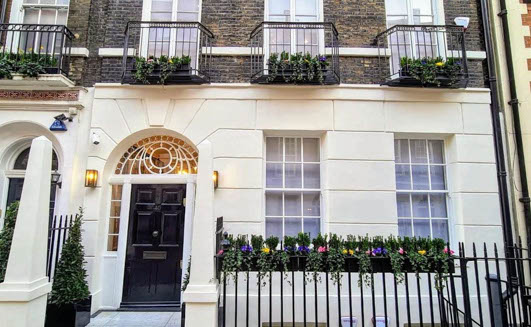
Investing in commercial property is tricky enough in the current market, but it can be made even more complicated when a corporate setup is involved. It can lead to a lot of due diligence for us from both a legal and lending perspective and our underwriter, Ivo Redman, has noted an emerging trend here.
“There are many reasons why a person would choose to invest via a company, rather than as an individual,” he said.
“But when different entities start interacting with each other, things can become muddled.”
Recently, we’ve seen many first-time commercial landlords purchase multiple types of premises in their company name. Common examples include hotels or Airbnbs, or industrial hubs.
“Once purchased, many will then let to the borrower’s trading business. This is where the complications come in,” Ivo explained.
“To make sure this kind of plan would be feasible, we’d need to analyse the company books. So long as we could see that the trading company had a healthy turnover and profit, we’d probably feel comfortable in progressing, so long as everything else lined up.
“I’d also want to see evidence of the underlying borrower’s experience. So, for example, if I saw that the trading company was already renting another property that was bringing in consistent, healthy rents, that would make me even more comfortable with serviceability.”
Often, with these kinds of cases, it’s not only our funding that will be put towards the purchase. There may also be an intercompany loan agreement, a gift from family members, and more. Ivo broke down what he’d do to make sure this all added up.
“I’d work with the solicitors involved to obtain a deed of gift letter, while at the same time conduct KYC and AML checks on the giftors, just to make sure everything was accounted for,” he said.
“I’d also look to obtain/involve insolvency indemnity insurance. We could also look to minimise the risks involved by tweaking the lending details, which would protect both us and the borrower.
“So, for instance, say we lend 70% against the property’s 180-day market value. It could actually be 65% of the actual market value, and this small difference could have a big impact on our comfortability.”
With all this covered, the borrower and ourselves could then focus on the exit strategy which, commonly for a commercial deal, may involve refinancing at the end of our term.
There’s a lot of uncertainty in the commercial market at the moment and with a dramatic Autumn Budget on the way, things may only get more complicated for landlords. Regardless of what’s on the horizon though, and how investors respond to any changes, we will be there with creative solutions, and tailored funding.
FAQs
What challenges arise when multiple corporate entities are involved in a commercial property purchase?
When several corporate entities are involved, the complexity increases due to the need for thorough due diligence from both legal and lending perspectives. We assess the financial health of each entity, ensuring that the trading company has a healthy turnover and profit. Additionally, we look for evidence of the underlying borrower’s experience, such as consistent rental income from other properties, to ensure serviceability. This comprehensive evaluation helps us determine the feasibility of the investment.
How do you handle intercompany loans or gifts in a commercial property transaction?
In cases where intercompany loans or gifts are part of the funding structure, we work closely with solicitors to obtain necessary documentation, such as deed of gift letters. We also conduct Know Your Customer (KYC) and Anti-Money Laundering (AML) checks on the parties involved to ensure transparency and compliance. This thorough process allows us to incorporate these elements into the financing arrangement effectively.
What is a typical exit strategy for a commercial deal?
A common exit strategy for commercial deals involves refinancing at the end of our term. This approach allows the borrower to secure long-term financing under more favourable terms, leveraging the improvements or stabilisation achieved during our loan period. We work closely with borrowers to align the loan structure with their long-term objectives.




